Reviews & Articles
Review of 15 Invitations for 15 Years, at Asia Art Archive (14 Dec 2015 - 23 Jan 2016)
Frank VIGNERON
at 3:30pm on 19th April 2016
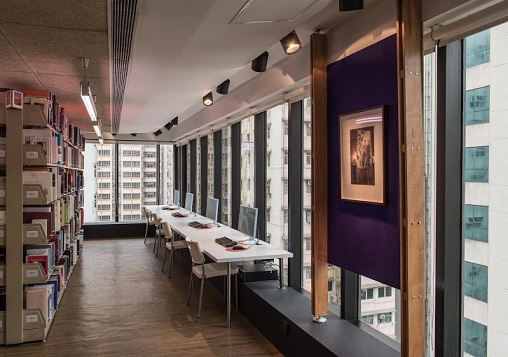
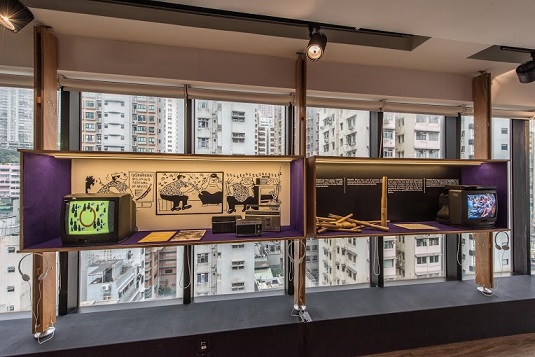
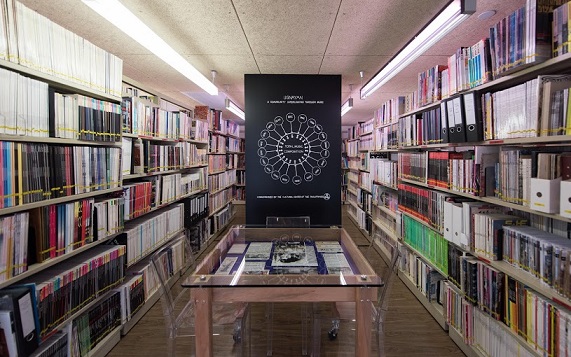
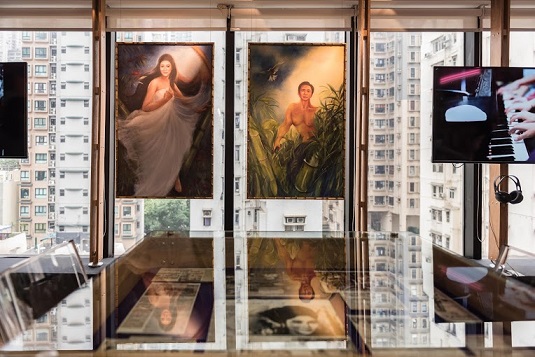
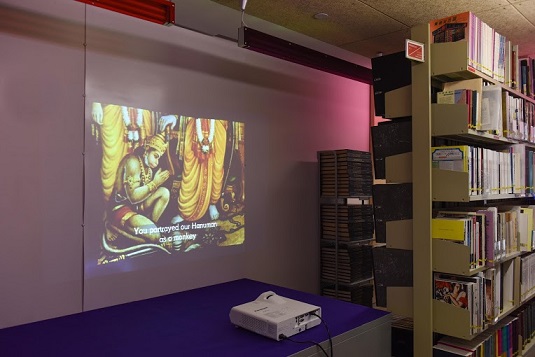
Captions:
1.-3. Installation views of Udiot-udiot exhibition at Asia Art Archive, Hong Kong, 14 December 2015-23 January 2016. Photography: ©Kitmin Lee. Courtesy of Asia Art Archive.
4. Detail of Pio Abad, Ferdinand as Malakas (the Strong One), Imeda as Maganda (The Beautiful One), 2015, from Udiot-udiot exhibition at Asia Art Archive, Hong Kong, 14 December 2015-23 January 2016. Photography: ©Kitmin Lee. Courtesy of Asia Art Archive.
5. Detail of Anand Patwardan, We are no Monkey, 2009, from Udiot-udiot exhibition at Asia Art Archive, Hong Kong, 14 December 2015-23 January 2016. Photography: ©Kitmin Lee. Courtesy of Asia Art Archive.
(原文以英文發表,評論亞洲藝術文獻庫之〈15份邀請〉 (14.12.2015 – 23.1.2016) 。)
In these troubled times in Hong Kong, when publishers of books critical of Chinese Communist Party personnel can disappear without a trace, the question of the involvement of the authorities in cultural activities become more than just an academic one. It also becomes a question of ethics. In my last review in this column, I mentioned an exhibition-plus-conference that took place in Shenzhen a few months ago on the role and functions of independent art spaces. This conference having taken place in Mainland China, it was not too surprising that no mention was made of the possible downside of getting funding from state institutions. Whereas being financed by the state in a democracy generally leads to real independence in the aesthetics and political choices made by an art institution (and this is an oversimplification, it is actually not so clear), the expectations a dictatorial state will have when funding art activities will often be extremely problematic and present ethical conundrums that many art professional will have difficulties coping with.
Such questions were at the center of the talk given by the curator Inti Guerrero on the exhibition he put together in the library of the Asia Art Archive. Dedicated to the work of the Filipino composer and conceptual artist José Maceda (1917-2004), and particularly to two pieces made in the 1970s titled Udlot-udlot and Ugnayan, the show is also a reflection on the political implications of working with the representatives of an oppressive state while making avant-garde art. The oppressive state in question was that of the Philippines under the rule of Ferdinand Marcos, a true dictator who did not hesitate to have recourse to political assassination, torture and thousands of politically motivated arrests to sustain his grasp on power. And yet, it was this same dictatorial regime that created and supported an institution called the Cultural Center of the Philipinnes that was instrumental, under the aegis of the first lady Imelda Marcos, in the creation of these performances. During his talk on the exhibition, Inti Guerrero mentioned Imelda Marcos constantly since it was her involvement that made the works of José Maceda possible.
Both Udlot-udlot and Ugnayan were logistically complicated to create. Udlot-udlot consisted in a concert of bamboo instruments, traditional in the Philippines, performed by hundreds of participants. The photos of this performance, and a video of another made more recently, show large groups of participants wearing what appears to be school uniforms. It was clearly the participatory nature of this show that appealed to Inti Guerrero. To emphasize this dimension of Maceda’s compositions, Inti Guerrero put on display for instance a video by the Japanese artist Koki Tanaka 田中功起, showing a group of people playing together a single piano and following specific instructions (no room for this here, just read the handout when visiting the exhibition). What was more powerful though in Maceda’s works was their potentially subversive nature. The sort of mass rally necessary for the performance of Udlot-udlot can always be construed as a source of opposition to a politically oppressive regime and therein lied precisely its contradictory nature: in spite of the possibility for opposition of that kind of participatory art making, it was nonetheless organized with the help of the regime itself through funding from the Cultural Center of the Philippines. This inherent contradiction was even more clearly revealed by the other performance shown in the exhibition and titled Ugnayan. This time José Maceda orchestrated the broadcasting, by dozens of different radio stations, of independent scores. The music made possible by these broadcasts could only be made by participants bringing their own radio receivers to ‘play’ these scores. Depending on how many people would bring their radios, and how many of them would tune in on particular stations, the resulting ‘concert’ would always be different.
An extraordinary strategy, questioning the idea of who is the composer, who is the performer, what is a performance but also playing throughout with the very notion of participation, accident and more-or-less voluntary involvement, the creation of Ugnayan also had to solve problems of organization, funding and logistics that are impossible to replicate today, even at the time of the internet and what seems to be even greater possibilities for participatory art. Here again, it seems obvious that only a non-democratic state could have created the conditions for such an event to take place: only when the state can dictate what is needed from the media, can coordinating all the radio stations of a country to broadcast what is needed for such a performance become possible. Therein reside the deep contradictions revealed by Inti Guerrero in his exhibition of José Maceda’s works, and these contradictions were enhanced and expanded with his addition of several other works related to the idea of participation in art making and, more importantly as far as I am concerned, with the contradictions and issues generated by the performance of such forms of art in dictatorial states.
To begin though, it is a piece by Pio Abad that opens the exhibition with a rather startling photo of a room of the Malacañang Palace where paintings of the Marcos couple were found. These images would make clear to anyone how insane, and how typically dictatorial, this regime was. The one we can feast our eyes upon at the onset of this show reveals Ferdinand Marcos, bare-chested and Putin-like, emerging from a bamboo grove (this seems to relate to an origin story of the Filipino people). The same painting, and its companion piece of Imelda Marcos wearing a gauze-like negligee, appears in another section of the show; they are presented in gaudy bamboo frames, the theme of the bamboo being repeated several times during the show in connection with the Maceda piece Udlot-udlot performed with bamboo instruments. Pio Abad, a Filipino artist based in London, specializes in reusing domestic accessories to narrate differently specific historical contexts. The context in question here is precisely that of the Marcos dictatorship in the Philippines, a time of real insanity and violence that seems to have vanished from the public’s mind, at least outside the Philippines. The only image that has survived of this period is that of Imelda Marcos herself, her gigantic collection of shoes, her (rather awful) singing and the fact that she was turned into a sort of benevolent matron by the media that still take an interest in her.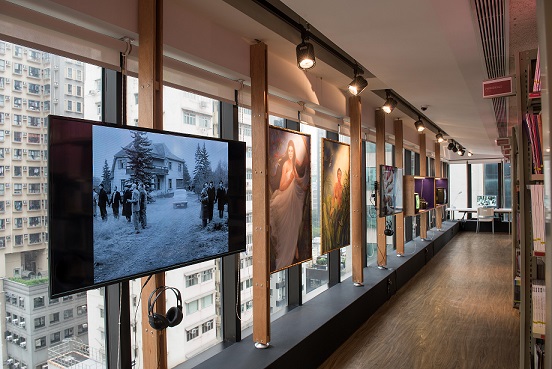
Installation view of Jan Švankmajer, The Garden, 1968, from Udiot-udiot exhibition at Asia Art Archive, Hong Kong, 14 December 2015-23 January 2016. Photography: ©Kitmin Lee. Courtesy of Asia Art Archive.
The two pieces that contextualized José Maceda’s works the most efficiently in Inti Guerrero’s exhibition consisted in two films from very different countries and cultures. The first one was a black-and-white short from 1968 by a Czech filmmaker called Jan Švankmajer. Called The Garden, it is the story of what looks like some sort of government official bringing someone to his country house for a visit. When they reach the place, we can see that the fence surrounding the property is made of a line of people holding hands, the official opening that ‘fence’ exactly as if it was a real fence, the door itself being made of people. After a while, the visitor just spontaneously takes his place within the fence, showing how easily one will submit to an oppressive regime: this person is not just taking his place without coercion inside the defensive system, but doing it without questioning, thus underlining how easy it is to be assimilated into such a system of state control. The wonderful cinematography enhanced beautifully the surrealist atmosphere of this short made by a filmmaker who inspired many later directors, like Terry Gillian (his masterpiece, Brazil, is also partly about the ease with which one submits to violent and controlling states). This film was made at the time of the Prague Spring, a time when the Czechs were questioning the oppressive nature of the Soviet regime and a period of extraordinary cinematic, artistic and literary productions. It was violently repressed by the Soviet Union in a military invasion that was often mentioned in the Western press as a point of comparison with the Tiananmen massacre in 1989.
The other film on display was the work of an Indian documentary filmmaker called Anand Patwardhan who specializes in films dealing with socio-political issues. In this extraordinary piece, he films a singer performing with a group of people who seem to be engaged in some sort of demonstration. The handout to the exhibition mentions that the singer is Sambhaji Bhagat, a musician and political activist, singing his own composition about how the mythology of Hinduism (and specifically the story of the monkey god Hanuman) is violently patriarchal, consistently designed to oppress through the caste system and always put women in a subservient position. The fact that a large portion of the people accompanying Bhagat in his song is made of women of all ages obviously reinforce the powerful message of this short film, the film itself being made of a dizzying succession of images of the performance and of popular images and films about Hanuman and his wives. The film, titled We are not monkeys, is clearly made with the simplest of means, consistent with Anand Patwardan’s method of documentary filmmaking that systematically avoid any involvement with the powers that be. And I could not help thinking that there might be a measure of criticism against José Maceda in this choice of film for the exhibition, since Maceda himself did not seem to have any qualms relying on Imelda Marcos, and therefore her monstrous husband, to finance his own projects. Strange bedfellows indeed.
